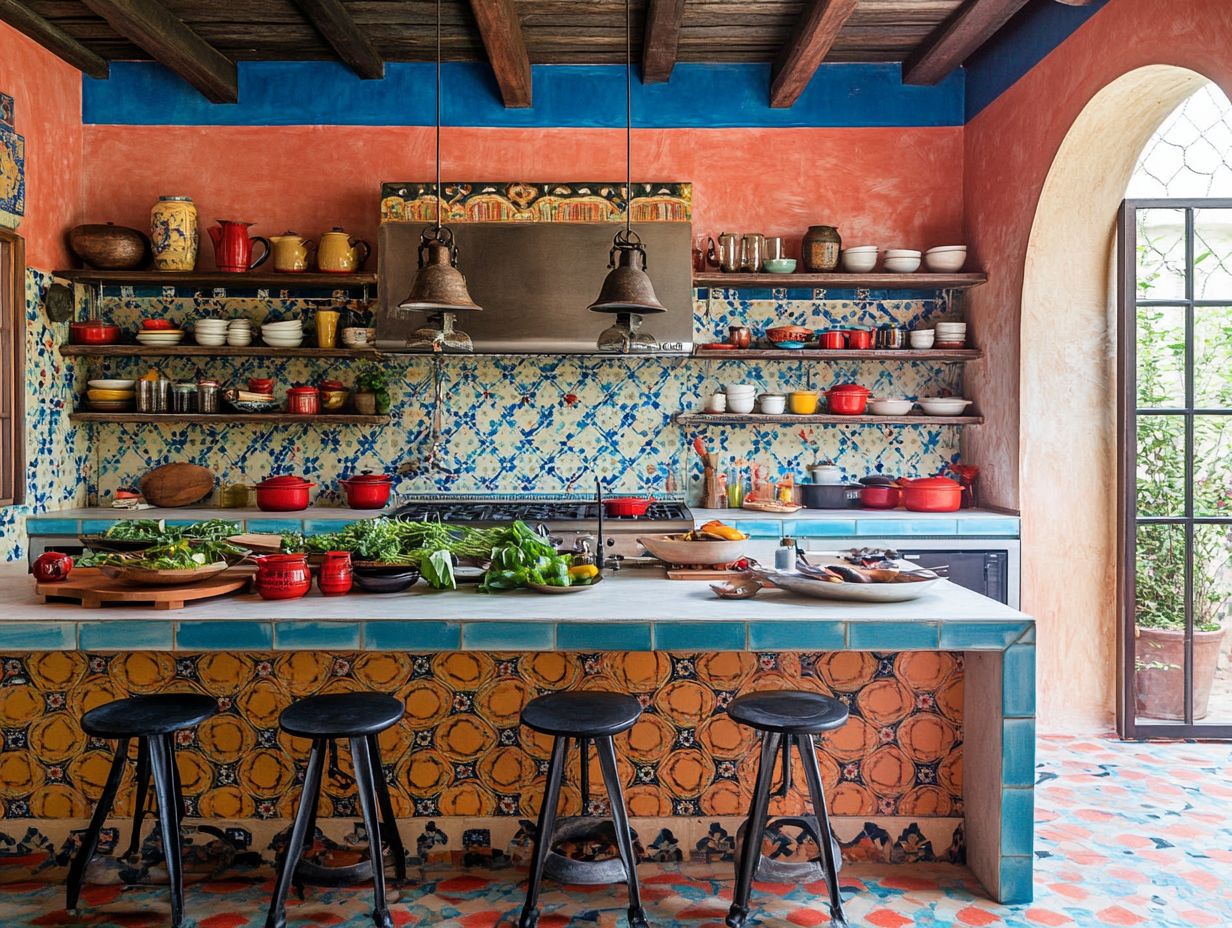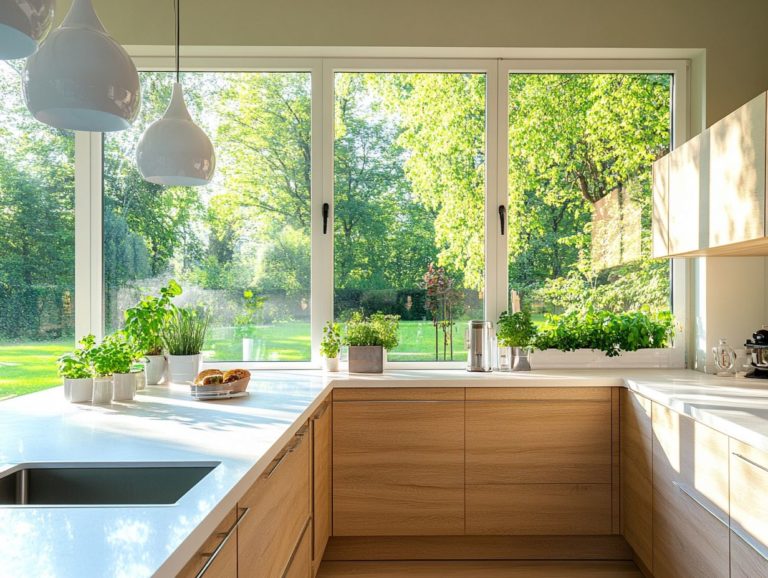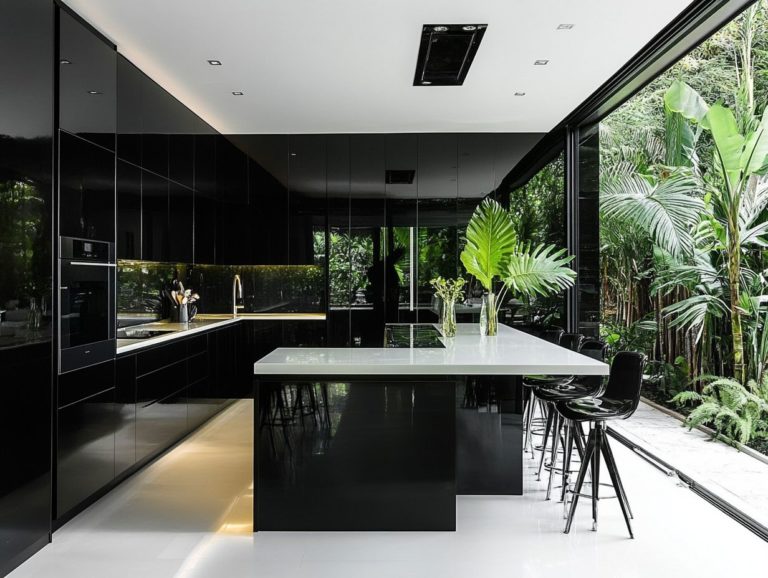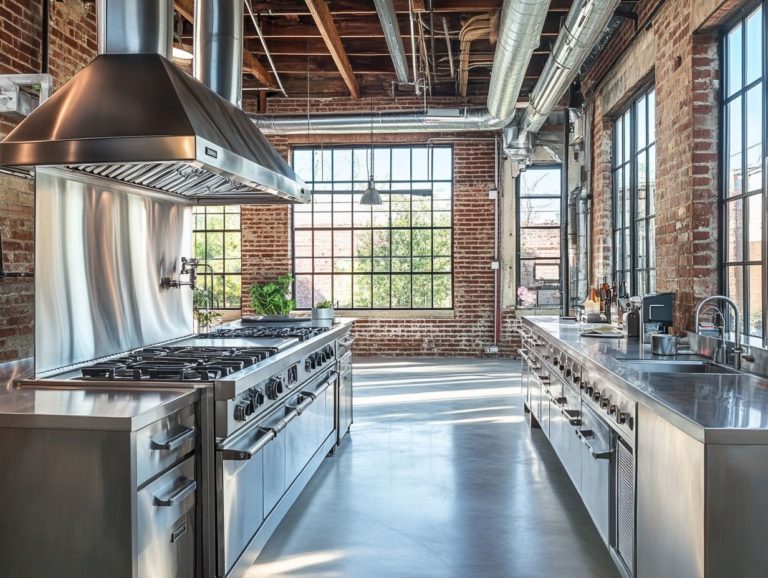Designing a Multi-Cultural Kitchen
In today’s world, kitchens have transformed into vibrant hubs of culture, creativity, and connection, far exceeding their traditional role as mere cooking spaces.
A multi-cultural kitchen not only enriches your culinary experiences but also fosters a deeper understanding and appreciation of diverse traditions. This article delves into the essence of multi-cultural kitchens, showcasing their numerous benefits in promoting diversity and encouraging culinary exploration.
You’ll discover practical design tips, essential equipment, and innovative ways to create an inviting atmosphere perfect for hosting unforgettable multi-cultural gatherings. Join us on this exciting journey as you celebrate the flavors and stories that unite us all!
Contents
- Key Takeaways:
- Understanding Multi-Cultural Kitchens
- Benefits of a Multi-Cultural Kitchen
- Designing a Functional Multi-Cultural Kitchen
- Tips for Creating a Welcoming Atmosphere
- Frequently Asked Questions
- Q1: Why is it important to consider multi-cultural aspects when designing a kitchen?
- Q2: What are some key elements to keep in mind when designing a multi-cultural kitchen?
- Q3: How can I ensure my multi-cultural kitchen design is inclusive?
- Q4: Are there any specific design styles that work well for multi-cultural kitchens?
- Q5: How can I incorporate cultural diversity in my kitchen design without it feeling overwhelming?
- Q6: What are some common mistakes to avoid when designing a multi-cultural kitchen?
Key Takeaways:

Promote diversity and inclusion by designing a multi-cultural kitchen.
Encourage culinary exploration by incorporating cultural elements and equipment.
Create a welcoming atmosphere with inclusive decor, seating, and hosting multi-cultural events.
Understanding Multi-Cultural Kitchens
Let’s explore what makes these kitchens unique. Understanding multi-cultural kitchens means recognizing how the rich tapestry of diverse cultural influences shapes everything from cooking design to culinary traditions and food preparation techniques.
These kitchens serve diverse functions, reflecting an array of customs and practices from around the world.
You’ll find that traditional recipes, lovingly passed down through generations, coexist with innovative modern appliances that enhance your cooking experience.
These kitchens also create emotional connections with your heritage, the types of food you cherish, and the shared experiences of multicultural communities.
By examining the design features that define these spaces, you’ll uncover how elements like open-plan layouts, kitchen islands, and energy-efficient features are redefining the modern kitchen design experience.
Benefits of a Multi-Cultural Kitchen
The advantages of a multi-cultural kitchen reach far beyond mere culinary pleasures; they cultivate diversity and inclusion, crafting environments where you can delve into an array of cuisines and cooking techniques.
These kitchens offer a canvas for culinary exploration, inviting you to experiment with traditional recipes from various cultures while leveraging modern appliances to elevate your cooking experience.
By embracing a rich tapestry of food types and culinary customs, multi-cultural kitchens deepen your understanding of the world and foster a profound sense of belonging among individuals from diverse backgrounds.
Promoting Diversity and Inclusion
Promoting diversity and inclusion in the kitchen is vital for cultivating an atmosphere where everyone feels enabled to share their culinary traditions and experiences. This approach fosters communal cooking practices that celebrate ethnic diversity and respect various cultural norms.
By encouraging individuals to learn from one another, you create a vibrant tapestry of global cuisines. When diverse culinary perspectives come together, they pave the way for innovative dishes that harmoniously blend ingredients and techniques from around the world.
Consider hosting a potluck where participants bring dishes that represent their heritage. This sparks exciting conversations about the history and significance of each dish, fostering collaboration and enriching mutual understanding.
Community events like food festivals or cooking classes featuring chefs from various backgrounds provide hands-on opportunities to engage with diverse culinary practices. Such initiatives educate attendees about different cooking approaches and cultivate a deeper respect for the cultural significance behind each dish.
Ultimately, this enriches the community’s appreciation for its collective gastronomic heritage.
Encouraging Culinary Exploration

Exploring new cuisines expands your cooking options. It also sparks creativity as you try new ingredients and techniques.
Participating in workshops allows you to learn from seasoned chefs who emphasize creativity and adaptability. Cooking classes offer hands-on experiences, letting you dive into unfamiliar dishes while shared recipes foster a sense of community among fellow food lovers.
This blend of learning and experimentation broadens your cooking skills and deepens your appreciation for the cultural significance of food. Your culinary journey will not only improve your skills but also bring delightful surprises to every meal!
Designing a Functional Multi-Cultural Kitchen
Designing a functional multicultural kitchen requires thoughtful consideration of the layout and equipment. It’s important to seamlessly integrate modern appliances that enhance cooking efficiency.
A well-designed kitchen accommodates various cooking styles while blending traditional elements with energy-efficient appliances. This balance facilitates smooth food preparation and transforms the kitchen into a welcoming hub for communal cooking.
Considerations for Design and Equipment
When planning your multicultural kitchen layout, prioritize cooking efficiency and effective organization. Creating a harmonious cooking environment is essential.
Choose appliances that fit various cooking styles. This ensures a functional workflow that accommodates diverse culinary practices.
Incorporate open-plan designs to foster a collaborative atmosphere. This allows multiple cooks to work side by side with ease. A kitchen island not only provides additional prep space but also serves as a gathering spot for family and friends.
Designate specific zones for activities like chopping, mixing, and plating. This can streamline your cooking process and minimize clutter.
Equipping your kitchen with versatile tools enhances efficiency. It makes it simpler to switch between different culinary styles while keeping the environment organized and inviting.
Incorporating Cultural Elements
Incorporating cultural elements into your kitchen design celebrates traditional cuisines and practices. This enriches your cooking experience.
Integrate decor that reflects diverse culinary backgrounds, transforming your kitchen into a vibrant space that tells your culinary story. Traditional cookware serves practical purposes and connects generations.
Imagine introducing clay pots, cast iron skillets, or bamboo steamers—each can evoke cherished memories of family gatherings filled with delicious meals. Displaying ethnic decor, such as vibrant tapestries, adds layers of visual interest.
Design elements like open shelving for your spice collection invite family and friends to gather, deepening emotional bonds while honoring culinary customs from around the globe.
Tips for Creating a Welcoming Atmosphere

Creating a welcoming atmosphere in your multicultural kitchen is vital for fostering connections among those who share meals and experiences. Thoughtful decor and seating arrangements transform your kitchen into a communal hub, where hosting multicultural events becomes enjoyable and memorable!
Inclusive Decor and Seating
Inclusive decor and thoughtfully designed seating arrangements are essential for creating the right ambiance in your multi-cultural kitchen. This encourages connections during cooking and dining. By selecting decor that reflects diverse cultures and implementing flexible seating solutions, your kitchen can effortlessly accommodate gatherings of all sizes and types.
To cultivate an inviting atmosphere, incorporate artwork and textiles that celebrate various cultural narratives, such as handcrafted wall hangings or vibrant table runners. These elements spark conversations about heritage and tradition, helping guests feel more connected.
Arranging seating in intimate clusters—perhaps with a mix of chairs, benches, and cushions—enhances interaction and facilitates easy dialogue among your guests. This thoughtful design elevates the decor and transforms your kitchen into a dynamic space where shared experiences flourish, ensuring everyone feels included.
Hosting Multi-Cultural Events
Hosting multi-cultural events in your kitchen is a remarkable opportunity to bring people together and share culinary traditions. This cultivates a vibrant sense of community and collaboration. These gatherings ignite creativity in food preparation, allowing you and your guests to showcase unique dishes and learn from each other’s cooking methods.
Celebrating diverse flavors and cooking methods creates an inviting atmosphere where friendships can flourish. Thoughtful menu planning is essential; it ensures a delightful balance of flavors while accommodating various dietary preferences.
Sourcing ingredients locally adds authenticity and freshness to your dishes while supporting local farmers. Encouraging collaborative cooking activities turns the process into a joyous occasion, allowing participants to bond over shared tasks and transforming your kitchen into a melting pot of ideas and experiences.
Frequently Asked Questions
Q1: Why is it important to consider multi-cultural aspects when designing a kitchen?

A1: Designing a multi-cultural kitchen accommodates a diverse range of cooking and dining needs while promoting inclusivity and understanding of different cultures.
Q2: What are some key elements to keep in mind when designing a multi-cultural kitchen?
A2: Important factors include different cooking techniques, dietary restrictions, and creating a welcoming atmosphere for all cultures.
Q3: How can I ensure my multi-cultural kitchen design is inclusive?
A3: Make your kitchen design inclusive by incorporating various seating options, providing versatile cooking tools and appliances, and including cultural decorations and design elements.
Q4: Are there any specific design styles that work well for multi-cultural kitchens?
A4: There’s no one best style, but mixing elements from various cultures can create a unique and welcoming kitchen. Functionality and practicality are also important.
Q5: How can I incorporate cultural diversity in my kitchen design without it feeling overwhelming?
A5: Incorporate cultural diversity through subtle touches like different spices in your pantry, unique utensils, or small pieces of cultural art throughout the space.
Q6: What are some common mistakes to avoid when designing a multi-cultural kitchen?
A6: Common mistakes include assuming all cultures have the same cooking needs, not considering accessibility for all household members, and failing to educate oneself on different cultural practices and customs.
Ready to create your own multi-cultural kitchen? Start incorporating these ideas and share your unique cooking experiences!





